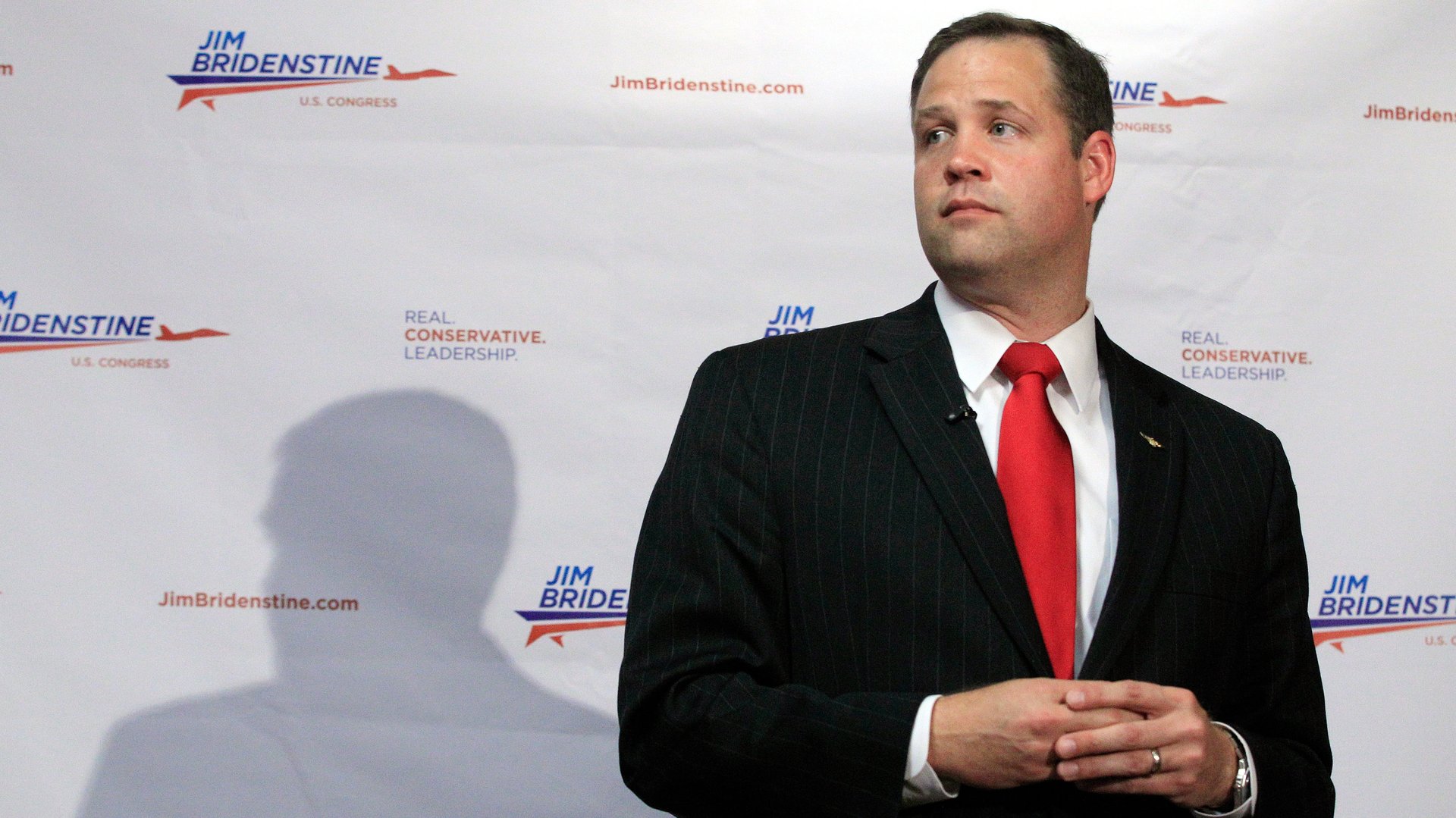Donald Trump’s NASA administrator has finally been confirmed by the Senate
Jim Bridenstine, perhaps the most politically controversial NASA administrator in history, was confirmed today (April 19) on a party-line vote in the Senate, giving the US space agency a permanent leader for the first time in 15 months.


Jim Bridenstine, perhaps the most politically controversial NASA administrator in history, was confirmed today (April 19) on a party-line vote in the Senate, giving the US space agency a permanent leader for the first time in 15 months.
The 50-49 vote puts the Oklahoma congressman in charge of the sprawling space agency and its $20-billion annual budget.
While NASA administrators in recent memory were confirmed unanimously, Bridenstine’s nomination languished due to his lack of experience managing large organizations, his record as a conservative Republican who criticized climate-change research and LGBT Americans, and his reputed willingness to shake up NASA’s culture. Senator Bill Nelson, a Florida Democrat long influential on space issues, led the opposition to Bridenstine.
Why Bridenstine sparked debate
A procedural vote to move his nomination forward nearly failed yesterday when Arizona Republican Jeff Flake opposed it to win concessions on unrelated issues, then gave in under pressure from party leadership. The imminent retirement of Robert Lightfoot, a longtime NASA civil servant who has been the agency’s interim leader since January 2017, increased pressure on the key Republican hold-out, Marco Rubio of Florida. Rubio also wanted to avoid intra-party scuffles ahead of the critical 2018 senate race in Florida that pits Republican governor Rick Scott against Nelson, senate sources tell Quartz.
Bridenstine has won over advocates of a more efficient NASA that relies on private companies to get to space, who see him as a potential change-maker, and also some non-partisan figures like Bill Nye, the science educator and CEO of the Planetary Society. He also walked back his harsh words for climate change and Americans with different identities than his.
Bridenstine, a long-time aerospace enthusiast and former Marine aviator, won’t be the first administrator without deep knowledge of engineering and spaceflight. But he lacks the managerial experience boasted by previous administrators like Sean O’Keefe, who had run the Navy’s Pentagon bureaucracy and led the federal budget process, or the legendary James Webb, who had also been a budget director and undersecretary at the State Department. Bridenstine’s tenure in charge of the Tulsa Air and Space Museum was at best a failure of fiscal management, and the nonprofit’s support of a troubled aerial-racing venture Bridenstine had invested in raised allegations of self-dealing.
What he’ll need to get done at NASA
President Donald Trump re-constituted the National Space Council under vice president Mike Pence last year. The administration has been pushing for a broader, more coordinated strategy across government that leverages the investment of a new wave of private companies like SpaceX and Blue Origin, while using their competitive threat to push for cheaper and better service from the traditional prime contractors of the US space program such as Boeing, Lockheed Martin and Northrop Grumman.
Bridenstine’s initial challenge will be convincing US lawmakers to fund the president’s priorities at NASA, which Congress has proven reluctant to do. He will try to win over private sector and international partners for a mooted future moon habitat and figure out a plan for someone else to pay for the International Space Station. He will also supervise the return of human spaceflight to the US as Boeing and SpaceX prepare to fly astronauts in early 2019, and the completion of the Space Launch System to send an unmanned mission to the moon expected in December 2019.
“I’m pleased to see Jim get confirmed,” Phil Larson, a former Obama space adviser who is now assistant dean at the University of Colorado’s engineering school. “NASA needs strong leadership, a real partner for commercial space, and someone committed investing in breakthrough space technologies.”
Perhaps the biggest question on the minds of the space community, however, will be the identity of Bridenstine’s deputy at the agency, expected to be someone with far more experience in the space community. That person will play a vital role in making any change of direction at the space agency more than rhetoric.